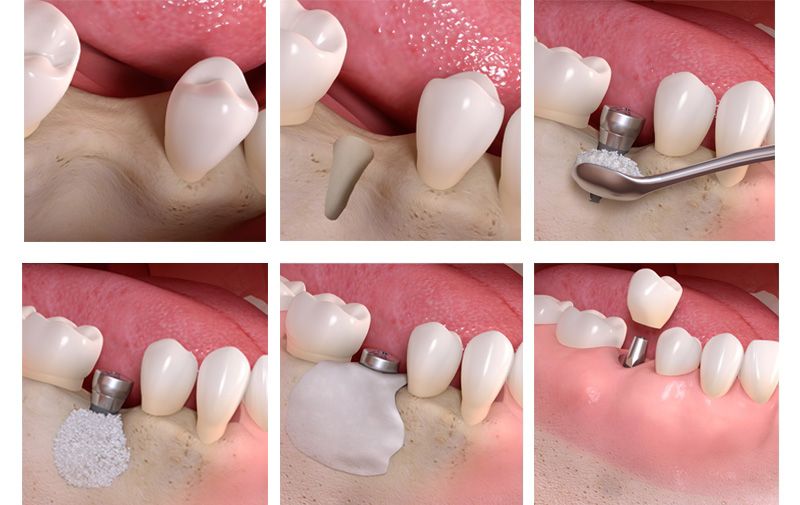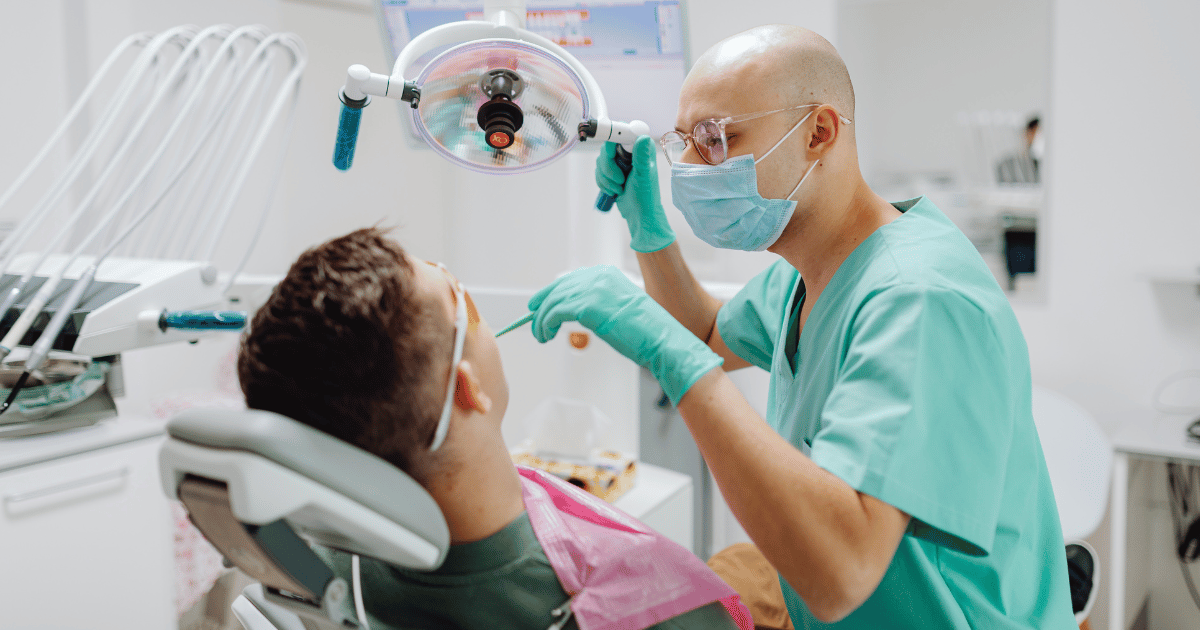Bone graft for dental implants: process and recovery
Bone grafting for dental implants helps patients with bone loss prepare for the implant procedure, ensuring a successful outcome.
While dental implants are a popular solution for replacing missing teeth, they rely on a certain level of bone density in the jaw to support the implant screw. Bone grafting for dental implants helps patients with bone loss prepare for the implant procedure, ensuring a successful outcome. Learn more about the process in just 5 minutes!

What is bone grafting for dental implants?
Bone grafting is a medical procedure used to increase the amount of bone in a certain area of the body, typically using bone from elsewhere in the body. Bone grafting for dental implants is a specific type of bone graft procedure that’s carried out to increase jawbone density in dental implant patients with bone loss.
It’s an important part of the process for these patients because a certain level of jawbone density is required for the dental implant screw to be inserted securely.
Materials used for bone grafting
Most bone grafting procedures use two main materials to achieve a successful outcome:
- A bone filler: The material used to replace missing bone, which can be the patient’s own bone (often taken from the hip), bone from an animal, or a synthetic bone-like material.
- A barrier membrane: A coating used to protect the bone graft materials as it fuses with the existing bone and stimulates further bone regrowth.
There are different names for bone grafts depending on where the bone filler material is sourced from. If the patient’s own bone is used, it’s called an autograft; if animal bone is used, it’s called a xenograft; and if a synthetic material is used, it’s called an alloplast.
Types of bone grafts
Aside from the different types of dental bone grafting materials, there are also different types of bone grafting procedures used in the dental implant process. The main ones are:
- Minor bone augmentation: In cases where only minimal bone loss has occurred, minor bone augmentation can be performed as part of the implant procedure
- Staged bone grafting: If there’s too much bone loss to allow for minor bone augmentation, a staged bone grafting procedure is usually carried out up to six months before the implant, allowing time for the site to heal.
- Ridge preservation: Ridge preservation bone grafts are carried out when tooth extraction precedes a dental implant by a few months, designed to prevent the jawbone ridge from shrinking before the implant procedure.
- Sinus lift: If the dental implant will be performed at a site near the back of the mouth that’s impacted by the proximity of the sinuses, a sinus lift can be carried out to add bone below the sinus space and allow for proper dental implant placement.
Which bone graft is right for you will depend on what teeth you’re having replaced and how advanced your bone loss is, but a professional will identify the correct course of action during an initial examination.
Who needs a dental bone graft for dental implants?
A bone graft is required for a successful dental implant in cases where the patient lacks adequate bone volume or density in the jaw to accommodate the dental implant screw. This can be the result of bone loss caused by a missing tooth, gum disease, trauma, or congenital defects.

The bone grafting procedure
While the details vary depending on what type of bone graft is being used, the following steps outline the general bone grafting procedure for dental implants:
- An initial dental examination will be carried out, often including an X-ray or other dental scan, to determine the extent of your bone loss and identify the best-suited bone grafting procedure. The dentist will discuss their thoughts with you and, together, you’ll agree on a personalised treatment plan.
- On the day of the bone grafting procedure, the dental professional will first numb the relevant site with a local anaesthetic before creating a small incision in the gum to access the jawbone. The chosen bone grafting material will be applied, and often covered with a membrane for additional protection. The gum incision will then be closed with stitches.
- After the procedure, you’ll be able to go home and start the recovery process. There may be minor side effects like pain, swelling, or bruising, but these should subside after several days. Following a full recovery, you’ll be ready to move on to the dental implant procedure.
Length of the bone graft procedure
The bone grafting procedure is relatively simple and doesn’t take very long to complete apart from in particularly complicated cases. Minor bone grafts can generally be completed in less than an hour and a half.
Expected pain & discomfort level during the treatment
Bone grafting is almost always carried out under local anaesthetic, which completely numbs the affected area and means that you should experience very little pain or discomfort if any at all.
Bone grafting healing time & recovery
How much healing time you should expect after a dental bone graft depends on the extent of the procedure. There are two parts to the healing process – how long it takes for the pain or discomfort to subside and how long it takes for the bone graft itself to heal completely.
Generally speaking, any post-graft pain or discomfort should subside after a few days, during which time you can take painkillers to manage the symptoms.
The bone graft itself can take between three and nine months to heal completely. You won’t be able to move on to receive a dental implant until after this period, ensuring that the newly regenerated bone is ready to act as a secure ‘anchor’ for the dental implant screw.
Tips for quicker recovery & pain management
There are several things you can do to support the healing process after a bone graft for dental implants:
- Immediately after the procedure, follow your dental professional’s advice regarding diet and exercise. If you experience pain or discomfort, take painkillers according to the guidance provided. You may also be prescribed antibiotics to minimise the risk of infection, which you should use as instructed.
- In the following months as you wait for the bone graft to heal fully, make sure to maintain a good dental hygiene routine to keep your teeth and gums clean and healthy. You may also be advised to avoid particularly hard or sticky foods to lessen the risk of disrupting the graft site.
- You’ll be expected to attend several follow-up appointments before the date of your dental implant, during which you’ll be updated on how the healing process is going and get the chance to ask any questions you have.
Dental implant placement after bone graft
Once your dental bone graft is completely healed, you’ll be ready to receive a dental implant. Provided the grafting procedure and healing process both went well, the dental implant procedure will be no different to any other and you can expect the same extremely high tooth implant success rates.